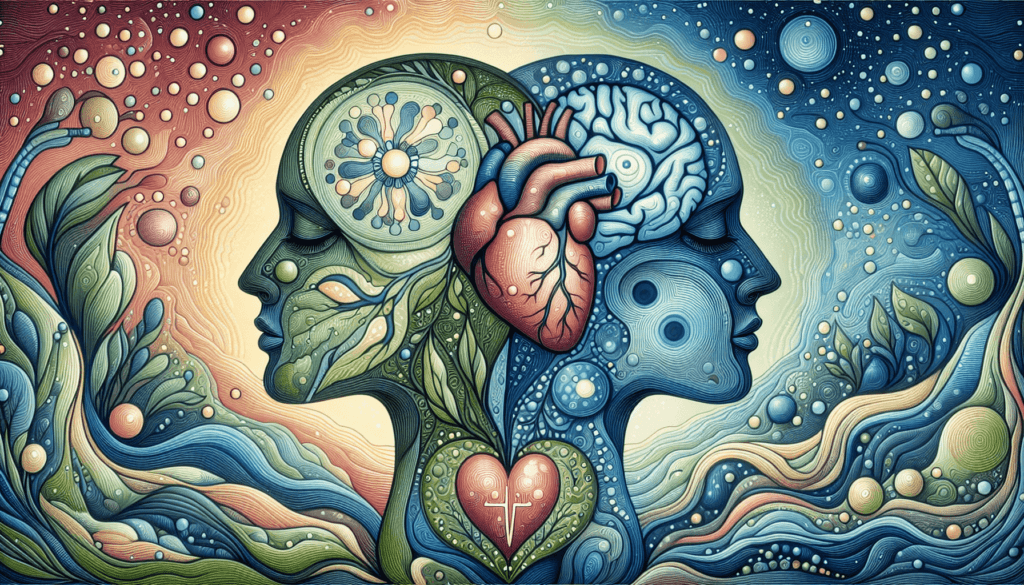Exploring the Common Ground Between Mental and Physical Health. What does mental and physical health have in common?
The interconnection between mental and physical health is a subject that often prompts curiosity and introspection. This intricate relationship is often the foundation of many discussions in the fields of medicine, psychology, and general health. As health professionals and individuals striving for holistic well-being, understanding this common ground is not just beneficial but essential.
Table of Contents
Overview
Mental and physical health are frequently seen as distinct spheres. However, creating a well-rounded perspective requires acknowledging their intersecting paths. This article explores how mental and physical health influence each other, supported by historical contexts, current trends, key concepts, and empirical evidence. Understanding this relationship holistically can improve healthcare approaches and personal strategies for better health.
Thesis Statement
The objective of this article is to elucidate the intertwined nature of mental and physical health, supported by credible research, practical examples, and a thorough analysis of various perspectives. By the end, you will have a comprehensive understanding of how these two facets are not only interconnected but mutually reinforcing, providing actionable insights for enhancing overall well-being.

This image is property of images.unsplash.com.
Historical Context of Mental and Physical Health Integration
The notion of treating mind and body as one is not new. Ancient Greek and Chinese medicine viewed these elements as interconnected, influencing each other. The Greeks utilized the concept of “humors,” while traditional Chinese medicine emphasized the balance of Qi for overall health. Modern Western medicine’s division of specialties has somewhat segregated mental and physical health, but recent advancements are revisiting this ancient wisdom, urging a more integrated approach.
Current Trends in Holistic Health Approaches
Today’s healthcare landscape is increasingly embracing holistic approaches. This evolution is supported by mounting evidence linking mental conditions such as depression and anxiety with physical ailments like cardiovascular diseases and diabetes. Emerging practices like integrative medicine, which combines conventional treatments with complementary therapies (e.g., acupuncture, yoga), are gaining traction. These practices reflect a shift toward recognizing the interconnectedness of mental and physical health.
Example 1: Depression and Heart Disease
Depression significantly increases the risk of heart disease. Numerous studies have shown that individuals with depression are more likely to suffer from coronary artery disease and other cardiovascular conditions. This relationship is partly due to the physiological impact of chronic stress and inflammation, indicating how mental health directly influences physical well-being. According to the American Heart Association, addressing mental health issues can dramatically improve heart disease outcomes.
Example 2: Anxiety and Gastrointestinal Disorders
Anxiety often manifests physically in the form of gastrointestinal disorders, such as irritable bowel syndrome (IBS). The gut-brain axis, a complex communication network between the digestive system and the brain, plays a crucial role here. Stress and anxiety can disrupt this communication, leading to IBS symptoms. Therefore, managing anxiety can result in reduced gastrointestinal symptoms, illustrating another facet of the mental-physical health link.

This image is property of images.unsplash.com.
Key Concepts and Definitions
Mental Health
Mental health encompasses emotional, psychological, and social well-being. It affects how you think, feel, and act, influencing your ability to handle stress, relate to others, and make choices. Mental health issues include conditions such as depression, anxiety disorders, and schizophrenia.
Physical Health
Physical health pertains to the proper functioning of the body and its systems. It’s maintained through exercise, nutrition, and the absence of diseases. Physical health issues include heart disease, diabetes, and respiratory conditions, among others.
Holistic Health
Holistic health is an approach that treats the individual as a whole, considering the physical, emotional, mental, social, and spiritual dimensions of health. This approach ensures that all aspects of a person’s lifestyle are considered in the pursuit of optimal health.
Integrative Medicine
Integrative medicine combines conventional medical treatments with alternative or complementary therapies, such as acupuncture, massage therapy, and yoga. This approach aims to treat the whole person, not just the disease, by addressing mind, body, and spirit health.
Breaking Down the Interconnections
The Physiological Links
Stress-induced hormonal changes significantly influence both mental and physical health. For example, cortisol, the body’s primary stress hormone, affects various bodily functions. Chronic stress and elevated cortisol levels can lead to conditions such as hypertension, metabolic syndrome, and weakened immune response, while also exacerbating mental health issues like anxiety and depression.
Lifestyle Factors
Lifestyle choices such as diet, physical activity, and sleep profoundly impact both mental and physical health. A balanced diet rich in nutrients supports brain function and emotional well-being. Regular physical activity releases endorphins, alleviating symptoms of depression and anxiety. Adequate sleep restores both mental clarity and physical health.

This image is property of images.unsplash.com.
Impact Assessment of Holistic Approaches
Benefits of Integrative Therapies
Integrative therapies offer a multitude of benefits, primarily by addressing both mental and physical aspects simultaneously. Patients receiving integrative treatment for chronic ailments report improved quality of life, reduced symptoms, and better overall well-being. For instance, cancer patients engaging in yoga and meditation alongside their conventional treatments often experience less pain, reduced stress, and improved mood.
Case Study: Combined Therapies for Chronic Pain
A study published in the Journal of Pain Research found that combining cognitive-behavioral therapy (CBT) with physical exercise significantly alleviated chronic pain conditions more effectively than either treatment alone. This combination helped patients manage pain through psychological coping mechanisms and physical stamina building, further showcasing the benefits of an integrated approach.
Table: Comparison of Holistic vs. Conventional Approaches
| Criteria | Holistic Approach | Conventional Approach |
|---|---|---|
| Focus | Whole-person health (mind, body, spirit) | Symptom-specific treatment |
| Techniques | Integrative therapies (yoga, meditation) | Medication, surgery, physical therapy |
| Patient Engagement | Active role in self-care | Passive recipient |
| Outcome Measurement | Quality of life, overall well-being | Symptom reduction, disease cure |
| Time to See Results | Varies, often long-term improvement | Can be immediate but sometimes temporary |
Future Directions and Implications
Predictions
The future of healthcare is likely to witness a more profound integration of mental and physical health strategies. As research continues to unveil the biological and psychological links, therapies are expected to become more personalized, addressing individual needs comprehensively. Telehealth will also play a significant role in providing holistic care, making integrative health services accessible to a broader population.
Implications for Society
The emphasis on holistic health approaches can fundamentally change how society views health and wellness. It encourages preventive care and personal responsibility for health. Schools, workplaces, and communities might adopt these integrated approaches to foster environments that support overall well-being. This paradigm shift could reduce the burden on healthcare systems by preventing the onset or exacerbation of chronic conditions through early intervention and comprehensive care.

Conclusion
In summary, understanding the common ground between mental and physical health reveals a complex yet interwoven relationship that significantly impacts overall well-being. Historical insights and current trends highlight the importance of a holistic approach. By integrating mental and physical health strategies, individuals and healthcare providers can achieve more effective outcomes. The compelling evidence and detailed examples provided emphasize the need for a comprehensive approach to health that addresses the whole person, not just isolated symptoms.
What are your thoughts on the holistic approach to health? How do you think integrating mental and physical health can change our approach to well-being?
Further Reading
To better understand this topic, consider these additional resources:
- “The Body Keeps the Score” by Bessel van der Kolk
- “Integrative Medicine” by David Rakel
- “Mind Over Medicine” by Lissa Rankin, MD

